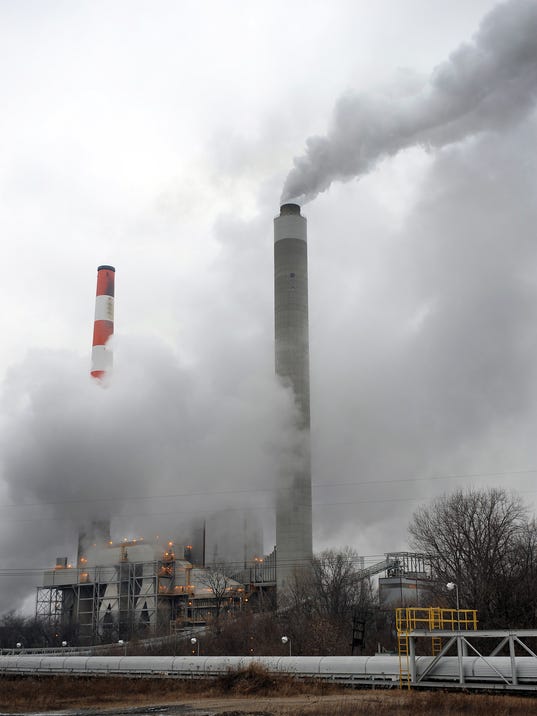Maureen Groppe, Gannett Washington Bureau.5:29 p.m. EDT September 9, 2014
WASHINGTON – Officials from Indiana and other states gave members of Congress dramatically different views Tuesday of a proposed federal rule to reduce greenhouse gas emissions from power plants.
Tom Easterly, commissioner of the Indiana Department of Environmental Management, joined officials from Texas and Montana in heavily criticizing the plan at a House hearing.
“This proposal will cause significant harm to Hoosiers and most residents of the United States,” Easterly told a panel of the House Energy and Commerce Committee.
By contrast, officials from Maryland and Washington state called the plan structurally sound and said the actions their states have already taken to reduce carbon dioxide emissions show it can be done without big increases in electricity rates or damage to the economy.
"Carbon pollution is a pressing matter for the state of Washington, and we have been eager 09for strong federal action to address it," said David Danner, chairman of the Washington Utilities and Transportation Commission. "Remember, too, that there are costs to the economy from taking no action."
The testimony from Henry Darwin, director of the Arizona Department of Environmental Quality, fell somewhere in the middle. Darwin questioned the Environmental Protection Agency's authority to act but said so far the agency appears to be listening to concerns the state has raised as the proposal is being refined.
"We are hopeful that, through collaboration, EPA and Arizona can develop a solution that is environmentally responsible, economically sustainable, and provides energy reliability so that we can prevent expensive and time-consuming legal challenges," Darwin said.
Indiana is among the 12 states that have already filed a legal challenge in hopes of preventing the EPA from completing the rule.
The EPA is taking comments through Oct. 16 on the proposal and expects to complete the rule by next June.
Of the six states that were represented at the hearing Tuesday, all but the officials from Maryland and Washington said they would like more time to give EPA feedback before next month's public comment deadline.
Under the proposed rule, Indiana would have to reduce by 20 percent the amount of carbon dioxide generated per unit of electricity by 2030. The target for each state is different because the EPA took into account how hard it would be for states to increase plant efficiencies, reduce energy demand, switch to renewable energy sources or use natural gas instead of coal — which sends more carbon dioxide into the atmosphere for the amount of energy produced than any other energy source.
Easterly said Indiana will be harmed by the proposal because the state gets more than 80 percent of its power from coal-fired power plants. In addition, Indiana's economy is more dependent on manufacturing than any other state and manufacturers use a lot of electricity.
As power costs rise, Easterly said, some manufacturers will look to reduce expenses and leave the U.S. for countries with "less efficient and more carbon intensive energy supplies." That will increase, not decrease, the amount of carbon dioxide emissions globally, he said.
Easterly, however, said he does believe the United States needs a national plan for reducing carbon dioxide emissions. But, he said, EPA's proposal is all pain and no gain.
A report released by the World Meteorological Organization Tuesday said greenhouse gases hit a record high in the atmosphere last year.
President Barack Obama is meeting with other world leaders later this month to discuss ways to reduce greenhouse gases globally.
Danner, of Washington state, said his region is already seeing the effects of carbon pollution. Warmer temperatures are increasing the population of pine bark beetles, which are devastating large tracts of forest land. The number of and cost of fighting large forest fires has increased. And acidification of the ocean is hurting the shellfish industry, Danner said.
Unlike Indiana, however, Washington state gets a very small share of its power from coal-fired plants.
But Kelly Speakes-Backman, head of the Maryland Public Service Commission, said her state has reduced its carbon dioxide emissions despite getting more than half its power from coal-fired plants. After increasing the use of renewable energy and natural gas and implementing energy efficiency programs, the state went from getting 56 percent of its power from coal to 44 percent.
"If there's one message I would leave with you today," Speakes-Backman said, "it's that it is possible to achieve emission reductions while supporting economic goals."







